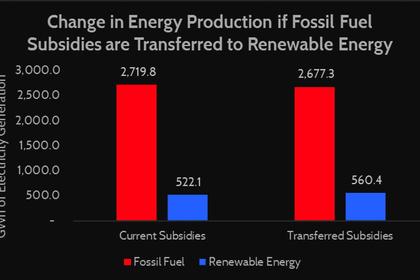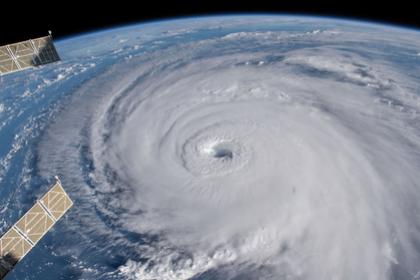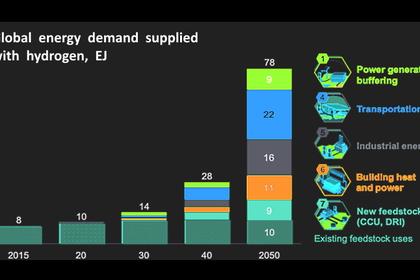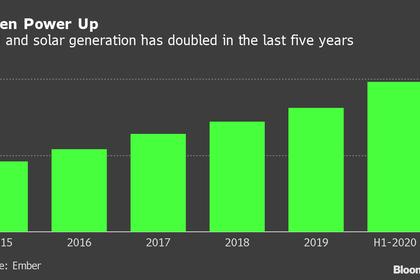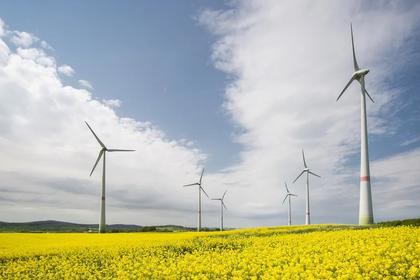
VOLATILITY OF RENEWABLES
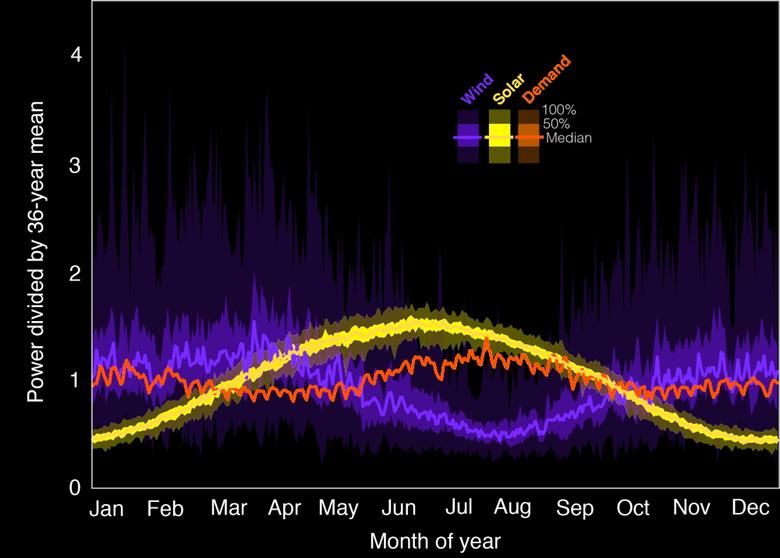
By Phil Schade, P.E. Senior Vice President H2M architects + engineers
ENERGYCENTRAL - Sep 2, 2020 - The use of batteries for electricity storage has been a reality for more than 200 years. Recent technological developments and the push for non-fossil fuel energy systems has resulted in application of batteries at the public utility scale, with installations in excess of 50 Megawatts (MW) of storage capacity not uncommon. While the scale is different, the lithium-ion battery technology is very similar to what is utilized in most mobile phones and electric vehicles.
Public utilities and supporting developers are finding battery systems to be useful in areas that see certain challenges. These challenges include one or more of the following:
- Demand for greener non-fossil fuel power
- Requirement for back-up or uninterruptible power
- Impracticality of conventional transmission upgrades to meet peak demand.
- Required storage for intermittent power source, such as solar and wind.
These challenges often exist in areas where fossil fuel peaking power plants and/or transmission upgrades are considered inefficient, impractical, or too expensive. We also see battery systems being installed in dense urban areas where residential or commercial demand has increased, and a local peak demand solution is required. Battery storage provides a solution and can be charged by existing power generation sources under non-peak conditions, when electricity is typically less expensive to produce during nonpeak (baseload) periods.
The proliferation of renewable power sources has also created an opportunity to apply battery storage. Some renewable systems, such as solar and wind, are inherently intermittent. Solar systems typically only produce power during daylight hours and wind systems only when conditions are sufficient to activate a turbine. When these renewable systems are active, and if there is a surplus of power, battery systems can store the excess for use during peak demand or during times when the renewable system is inactive.
Battery systems can also support uninterruptible power requirements such as those that might exist at a hospital or data center. Depending on the size and type of system, battery storage installations can generate rated power for many hours before being fully discharged.
There are a number of manufacturers that currently produce modular scalable battery systems. These include Tesla, Samsung, NEC, and ABB among others. The presence of multiple suppliers is useful to developers as it can help drive cost competitiveness and lower site development costs.
The use of these battery systems are finding a home in many areas within the United States. However they are not perfect for all situations and there are certain limitations to the technology. Battery storage installations require an external energy source to charge them, and do not actually generate electricity on their own. So they must be tied into a source as well as being set up to discharge and produce the stored energy when called for. Battery systems are also limited to a certain discharge duration. Often, systems are rated to provide a specified capacity for set duration, such as four hours. So an 80 megawatt-hour (MWh) capacity system may be rated to discharge 20 MW per hour for four hours (i.e. 80 MWh).
The basic components of a battery energy storage system include the following:
- The battery units themselves are connected in parallel to provide the required capacity. Typically these units are stand-alone, package systems with their own housing and thermal control systems.
- Bi-directional power inverter systems, which regulates the flow of electricity as well as the charge and discharge activity.
- Depending on the application, transformers may also be required to achieve the needed voltage for tie-in to a substation. Modifications to the substation switch gear may also be needed to support the generation tie.
- Various control and metering systems are applied depending on the application, and may include off-site operational and safety monitoring, metering, breakers, AC/DC converter, and battery management systems.
- The actual installation would also require dedicated land area and typical site support components, such as perimeter access control, security, site access, fire protection, lighting, site drainage, and stormwater control.
Identification of the need for a battery system and the driver behind installation can take a number of different forms. Some typical arrangements include the following:
- Public utility identifies a load pocket need and solicits proposals for development of a battery storage system. This may result in the utility purchasing the developed system or the developer and utility entering into a power purchase agreement
- Developer identifies a suitable site and contacts utility to negotiate a power purchase agreement.
- Existing facility (e.g. hospital or data center) owner identifies a need for back-up power and solicits proposals for an installation
- Community or municipality identifies the need for peak demand or backup power for a given location and solicits proposals for an installation
- Owner or user of an intermittent power generation system (e.g. solar or wind) seeks more continuous power supply and solicits development of a storage system to couple with the existing renewable system
Application and acceptance of battery systems are gaining ground, but there can be certain challenges when developing a large-scale storage project. Availability of sufficient land area and siting can be difficult when trying to implement a battery system in an industrial or densely populated area. Acceptance by the local regulatory body and surrounding community can also be a challenge. Given the relatively new nature of large-scale storage, most communities are still developing codes and regulations to address permits and zoning requirements. Public perception can also vary and sometimes pose a challenge to an installation. Finally, there is the need to tie into the local grid, which typically requires a transmission line to an existing substation. Depending on the proximity to the battery system development and the availability of capacity and space within the substation, this can also be a challenge. These potential obstacles can often be overcome, but may have an impact on development and installation costs.
In summary, utility scale battery storage systems are available to provide electrical energy storage and support load pocket, peak demand, and intermittent power solutions. These systems are finding applicability in many areas where fossil fuel systems and/or traditional upgrades are considered inefficient, impractical, or too expensive.
-----
This thought leadership article was originally shared with Energy Central's Utility Management Community Group. The communities are a place where professionals in the power industry can share, learn and connect in a collaborative environment. Join the Utility Management Community today and learn from others who work in the industry.
-----
Earlier:
